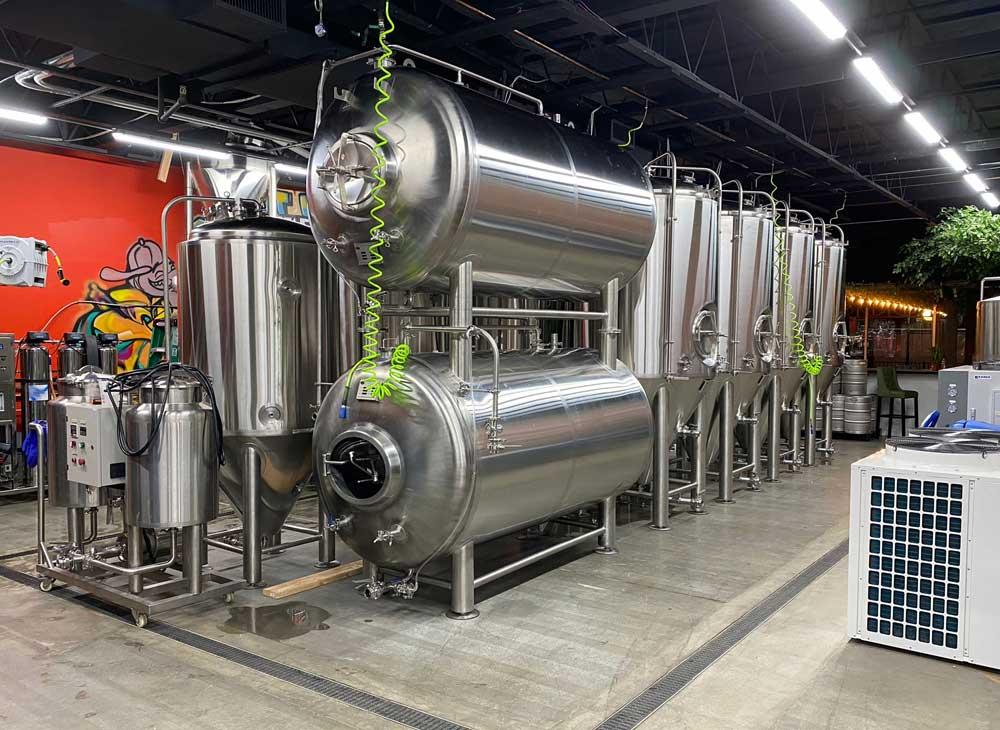
Brewing beer is a complex process involving several steps, each of which is key to creating a high quality product. Different types of equipment are used for the different stages of brewing.
Mash
The first step in brewing beer is Mashing, in which crushed grains are mixed with hot water to form a syrup in a Mashing pan. The purpose of Mashing is to extract the sugar from the grains, which is subsequently fermented by yeast to produce alcohol. During the Mashing process, the mixture is stirred by a mixer to ensure that all the grains are evenly hydrated and to prevent lumping. The wort is then heated to a specific temperature, usually between 148-158 degrees Fahrenheit (64-70 degrees Celsius), to activate the enzymes that break down the starch in the grains into fermentable sugars.
Lauter
Once the wort has been heated and the enzymes have done their job, the next step is to drain the slurry in a filter tank. Draining is the process of separating the liquid wort from the spent grain. This is usually done by pouring the wort through a sieve or filter called a 'Lauter tank', which allows the liquid to pass through while preventing the grain from entering.
Boiling
The next step in the brewing process is boiling. In this step, the wort is boiled in the z boiling pot. Firstly, the boiling sterilises the wort and kills any bacteria or wild yeast that may be present. Secondly, the boiling evaporates any undesirable flavours or aromas that may be present in the wort. Thirdly, the boil is where the hops are added to the wort. Hops are the flowers of the hop plant, which add bitterness, flavour and aroma to the beer.
Whirlpool
After the wort has been boiled and the hops have been added, the next step is to enter the whirlpool. Whirlpool cooling is the process of rapidly swirling the wort in a whirlpool, which causes any solid or hop particles to settle to the bottom. This helps to clarify the wort and prevents unwanted particles from entering the finished beer.
Fermentation
Once the wort has been boiled, the hops added and clarified, the next step is fermentation in the fermenter. Fermentation is the process of adding yeast to the wort and allowing it to convert the sugars in the wort into alcohol and carbon dioxide. The yeast consumes the sugars in the wort and produces alcohol and carbon dioxide as by-products.
Conditioning
Once the beer has finished fermenting, the next step is conditioning. Conditioning is the process of allowing the beer to age and mature, thereby improving its flavour and aroma. This is usually done by transferring the beer to secondary fermenters or conditioning tanks, where it is kept at a low temperature for a few weeks to a few months. During conditioning, any remaining yeast or solids settle out of the beer, allowing it to clarify further.
Packaging
The final step in the brewing process is packaging. This is where the finished beer is bottled, canned or kegged for sale. Prior to packaging, the beer may be filtered or carbonated to achieve the desired level of carbonation. Once packaged, the beer is ready for the consumer to enjoy.
Still have a problem on choosing the brewery equipment? We can help with your final decision. If you are looking for a turnkey solution for craft beer brewing system, please contact us. We are looking forward to working with you. Send an email now: [email protected]


.jpg)





Get A Quote